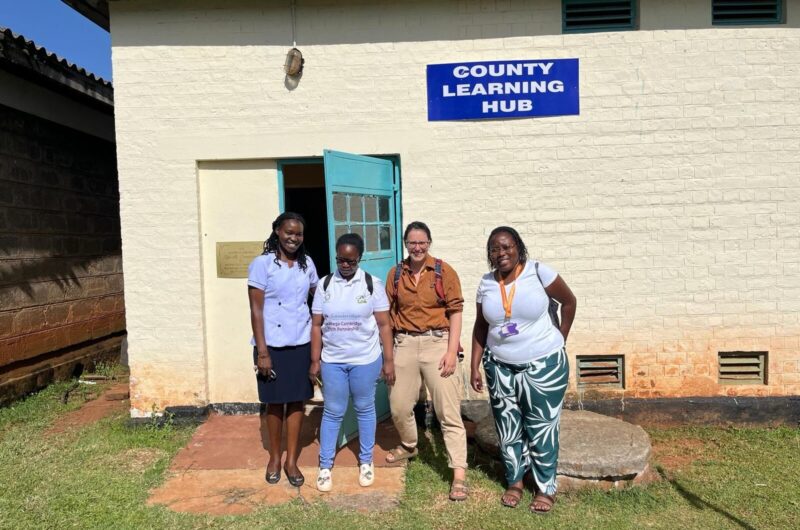By Kati Lestak
Kati Lestak is a 2024 East of England Global Health Fellow. As part of her fellowship year she spent a week in Kakamega, Kenya, co-delivering a refresher course on infection control, management of sepsis, postnatal care and major obstetric emergencies in a maternity setting. Part of the Kakamega – Cambridge Health Partnership, here Kati explains how the project is making lasting, sustainable change.
Kati is an ST4 in Obstetrics and Gynaecology and is passionate about achieving global equity in maternal and gynaecological health. She has previously had experience in the King’s Somaliland partnership, Medsin-UK (now Students for Global Health) and has a BSc in Global Health from King’s College London with a special interest in the ethics of evolving new technologies within aid spheres.
Find out more about all our current Global Health Fellows and their areas of expertise.
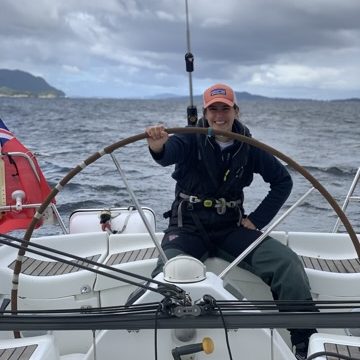
Background
“I once told a friend of mine that I didn’t have the mindset for health policy and systems. That it was much too complex, vague and didn’t deliver change that could be summarised to the people working on the ground. It didn’t suit my impatient attitude toward enacting change that I could immediately see; change that actually benefited those that required it. ‘Ha!’ She answered to this. ‘How can you not like it? It is the bread and butter of global health!’.
It took a further 10 years from this point, a global health fellowship, and a visit to Kakamega before I really understood this to be completely true.
Why the project is needed
Worldwide the biggest causes of maternal death is threefold: infection, haemorrhage and pre-eclampsia. This has been the case now essentially since the statistics started being recorded and, sadly, although global efforts continue to address this, there are thousands who lose their lives to these conditions each year.
The World Health Organization (WHO) estimates that around 800 people will die because of a complication of pregnancy per day (WHO, 2023)1. However, the death of a mother alone is not an isolated event. By its definition, the loss of life at reproductive age has substantial and multiple repercussions. It will deprive the local community and family of a vital member, including the potential income/economic viability that works to support both of these. Once multiplied, the burden of maternal death becomes stark and long-lasting; affecting whole communities and permeating into future generations.
The Kakamega-Cambridge Health Partnership addresses all three of these causes of maternal mortality. In November 2022, this took the form of a workshop around the prevention, diagnosis and management of maternal sepsis. Key features of this were the importance of anti-microbial resistance (AMR) as part of the partnership’s broader work addressing this issue throughout Kakamega County. For the visit I joined in March 2024, our priority was supporting our Kakamega partners with a similar course, but this time widening the scope of learning to cover other maternal emergencies including pre-eclampsia and post-partum haemorrhage. Our second goal was to ensure sustainability of this learning, with outward growth toward other local projects focusing on this prevalent and important issue.
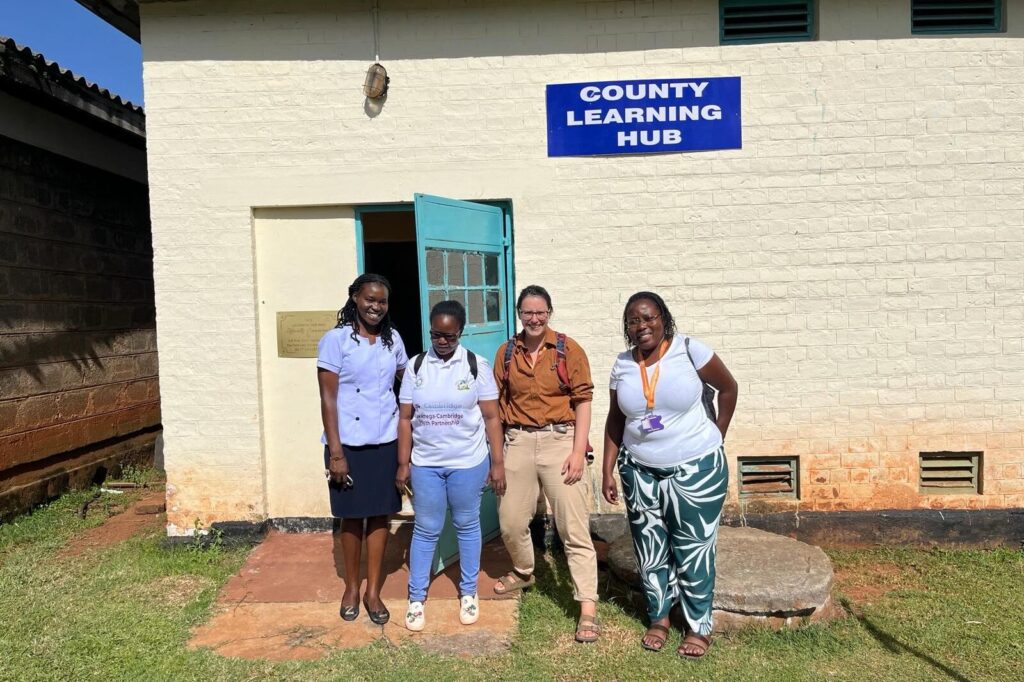
Kati Lestak and Mercy Adera (far right) with two of the Kakamega team.
Visit to Kakamega
I arrived in Nairobi a few days before the official visit start date, giving me chance to take in all the beauty the capital has to offer. This included a visit to the only National Park in Africa within city limits, a giraffe sanctuary and the delights of the national museum of Kenya. I was also greeted by the plethora of amazing Kenyan food. After the weekend, I met up with the other half of our Cambridge-based team for the short flight over to Kisumu.
From Kisumu it is a one-hour drive through the beautiful, green peaks of Kenya’s mountain region to Kakamega Town, where the partnership is based. We stayed close to Kakamega County General Teaching & Referral Hospital (KCGTRH), which operates as the central referral hub to the ‘spokes’ of surrounding smaller community health centres.
From there we were able to meet with our Kakamega partners and finalise plans for the next week. This included the final member from our Cambridge team, Mercy Adera, who trained at Kakamega hospital before moving to the UK to become a part of the theatre nursing team at the Rosie Hospital.
The educational course would take two days of the week, leaving time to coalesce and share ideas face-to-face, which is so important in health partnerships. For our group, this meant a tour around the KCGTRH grounds including the brand-new alcohol gel making station, as well as vital meetings with the Minister of Health and the Acting Chancellor at Masinde Muliro University of Science and Technology, among others. Building and fostering these connections forms a vital part of ensuring the partnership can act in harmony with the already existing educational and health system.
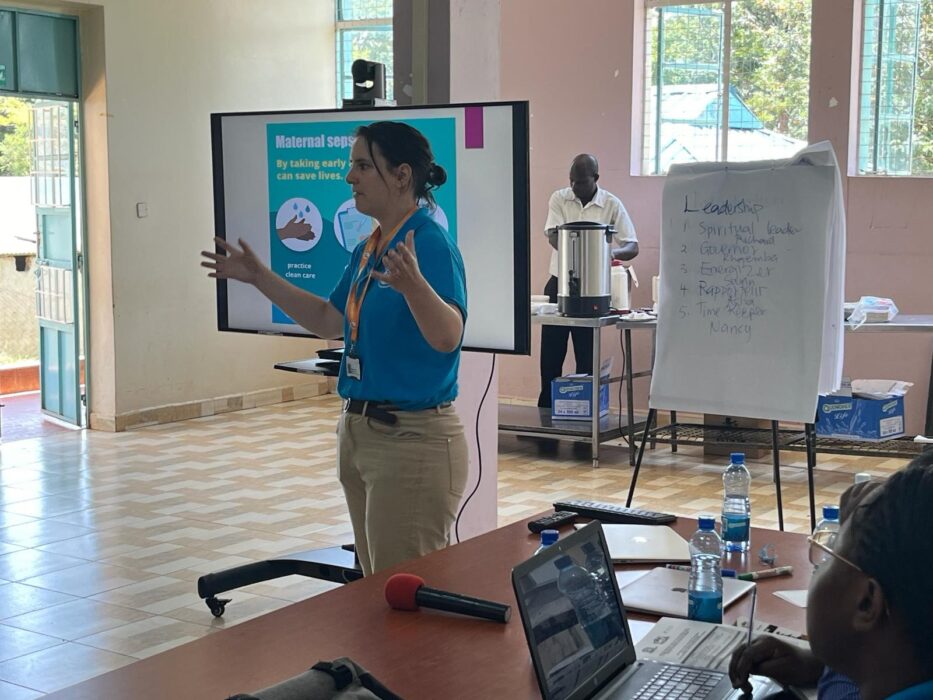
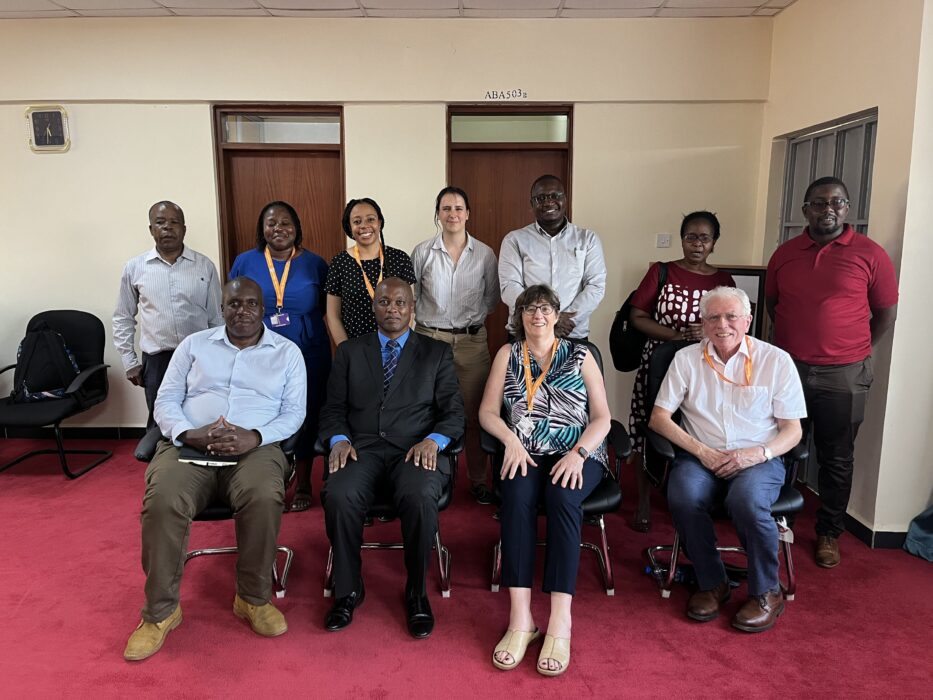
The training
From there we started to form the faculty and course plan for the next two days. This would include some basic lectures around sepsis, sterilisation and anti-microbial resistance, as well as further topics covering the management of pre-eclampsia and post-partum haemorrhage. Simulation sessions would then take up the rest of the time. With a primary focus on further quality improvement (QI) and sustainable change, quality improvement sessions by the QI lead were also built into the final day. Here, the delegates were invited to return to their own areas of clinical practice for a short time in order to identify potential projects, then form small break-out groups to plan the specifics of these. The hope is that this will give momentum toward change throughout multiple areas, with delegates coming from not only maternity, but also ICU, casualty and other areas too.
Although many came to the course, it was also easy to notice that some did not. This was due to an ongoing doctors’ and pharmacists’ strike throughout the whole of Kenya, which staged a complete walk-out the same week as our arrival. Uncontrollable factors like this are common in health partnership work and, with a renewed focus on sustainability, we needed to think outside the box to ensure learning continued into the future. We therefore designated new champions from the existing delegates to take the course forward, including at the spoke sites. The ease with which QI projects were enacted was extraordinary, and something that I have taken to heart when thinking about the rather slower route that QI has when trying to complete projects in the NHS.
And so a busy week ended with a quiet drink and onward thoughts into the future: How could we best ensure continued learning? How would we consolidate on what we had done in the week? What were the biggest learning points, and what were our biggest trials?
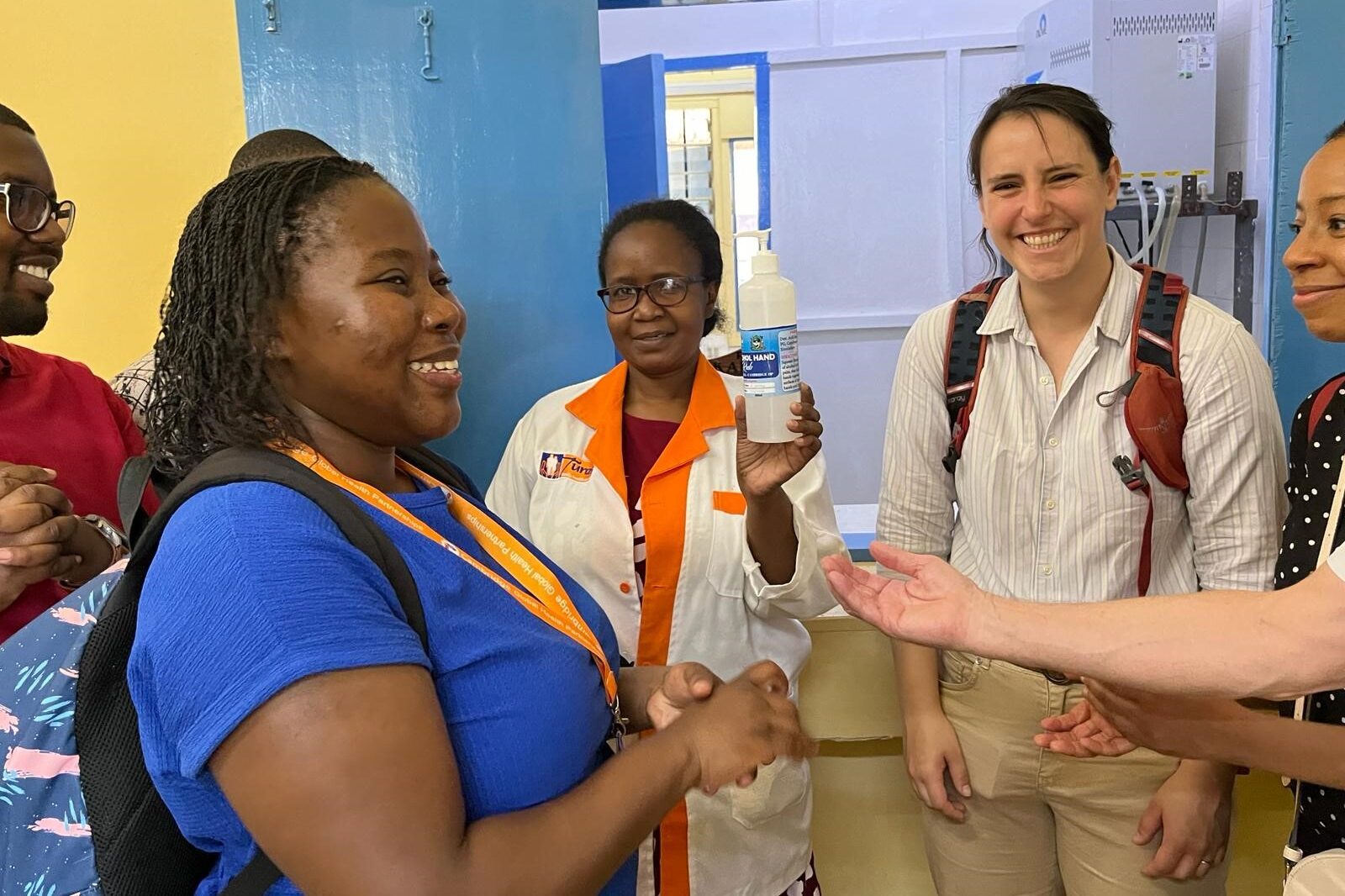
Looking ahead
Working within a health partnership requires learning collaboration. When thinking about sustainability, I was often hit by how much outside influences rock the local healthcare system and complicate the problem we are trying to solve. In the case of maternal sepsis in Kakamega, there were already a multitude of issues we needed to address, a doctors’ strike being only one of them. Looking at the bigger picture, and supporting local projects to withstand the buffets of various outside influences, is a larger job. When we look at the healthcare system design as a whole, we may be able to achieve sustainability by design changes alone.
So finally, after 10 years, I have learnt the importance of the “bigger picture”: Policy and Health Systems. Our next steps will focus on this, continuing the onward journey of eradicating maternal mortality once and for all.”
Find out more about the East of England Global Health Fellowship scheme and how to apply, or read more about the Kakamega-Cambridge Health Partnership.
References
1 WHO (2023) Link: https://www.who.int/news-room/fact-sheets/detail/maternal-mortality#:~:text=Key%20facts,related%20to%20pregnancy%20and%20childbirth). Accessed: April 2024.
Return to blogs

